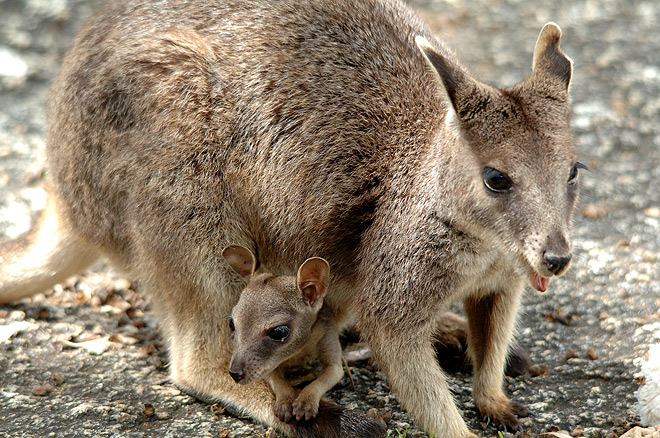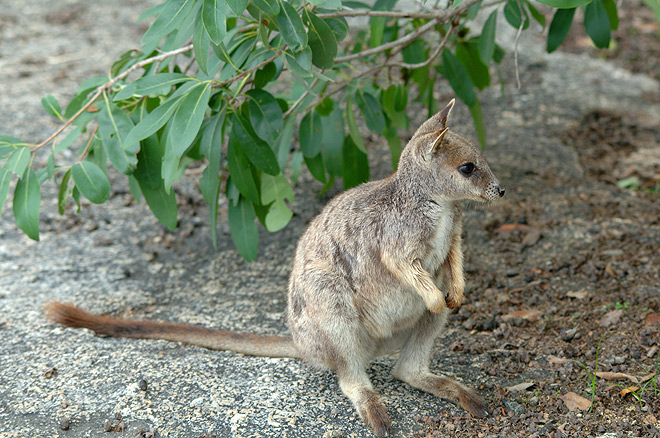A member of the Allied Rock Wallabies, which is not an association but a scientific classification, the Mareeba Rock-wallaby shares characteristics with the Sharman’s Rock-wallaby and the Allied Rock Wallaby. However, unlike others of its clan, the Mareeba Rock Wallaby is a relative newcomer to the rock-hopping classificatory system.

It was only recently, in 1992, that the Mareeba Rock Wallaby was classified as genetically distinct from its relatives. While the Allied Rock Wallabies are known to be parapatric, which is that they keep to a distinctly defined area, the Mareeba Rock Wallaby possesses a different number of chromosomes than other allied members.
Apart from this, one of the only ways of telling members of the clan apart externally, are by the places they inhabit. In the instance of the Mareeba Rock Wallaby, it’s an extremely rare species found solely in the area of Mareeba, on top of no more than a couple of mountain ranges.

All allied members, true to their name, subsist on rocky habitats, further more, they all go through fur molt in autumn. This is when their fur becomes a sandy colour that matches the ‘wallaby grass’ that grows around the rocks in which they live.
The best, and most likely the only place you’ll see a Mareeba Rock Wallaby, is at the Granite Gorge Nature Park, where these photos were taken. Located about 60km inland from Cairns, the Granite Gorge Nature Park is a place where you can see this endangered species in their natural habitat.
Other characteristics of the Mareeba Rock Wallaby are that they’re generalists and opportunistic feeders, while they have the good sense to mate all year round. They’re also a relatively small wallaby, with the males weighing about 4.7kg, which is slightly more than the females.
